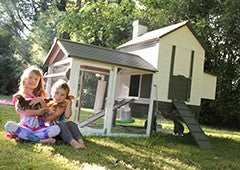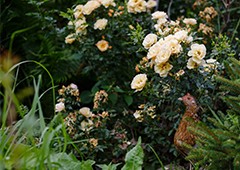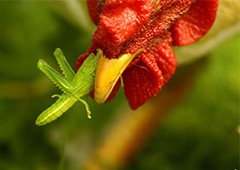The pastime of gardening undoubtedly results in an attractive backyard and, for those that take up planting fruits and vegetables, culinary benefits. But research also shows that getting our green thumb on comes with many health benefits for gardeners. These include:
-
Stress-reliever
-
Improves heart health and decreases stroke risk
-
Great exercise
-
Increase in Vitamin D
-
Increases brain health
-
Immune regulation
-
Assists with the treatment of mental illnesses such as depression
Not to mention the sense of satisfaction that comes from picking and cooking something you've grown yourself!
Despite this, many people choose to moan or scoff at gardening, putting it in the too hard basket. But with some free time on your hands, a little elbow grease and this article you can become a seasoned green thumb in no time, and we can assure you- you won’t look back!
To keep you from being overwhelmed by the prospect of beginning and maintaining a garden, we have stripped it back to the basics, have a peck at our Beginner's Guide to Gardening!
Plan Your Garden
The first step in any project is to plan before you take action. With gardening you will first need to decide what type of garden you would like- herb, vegetable, flower, shrubs or perhaps a mixture? Then from here choose the particular plants you want to go into your garden. It is important that you do your research first and choose those that are suited to your space and environment to ensure your best chance of success. For example; if you have a smaller backyard, it is probably best not to plant towering trees. Also, some vegetables can take up quite a bit of room in the garden - anyone who’s grown pumpkin before can relate!
You also need to look at the position of your garden, almost all vegetables and most flowers require up to 6 hours of full sun every day, so it is important to watch your garden and see where the sunlight hits. While most plants require sun, some tolerate shade well. Once again, it really does pay to do your research and see what plants will thrive where and work with what you can provide.
When to Plant?
Spring is a good time to begin planting, however trees, shrubs and perennials do well when planted in Autumn. This means that now (Summer) is the best time to begin your planning!
Soil 101
It may not be exciting, delicious or as pretty as your your petunias, parsley and potatoes, but soil is key to creating a gorgeous garden. If you want to create the healthiest soil possible, it is all in organic matter. Add a layer of compost, which you can easily make at home (here is everything you need to know)- from old leaves, chicken manure from your girls, grass clippings and some kitchen scraps. Your soil will give your garden a much needed nutrient boost, leaving your plants absolutely thriving!

Prepare for Planting
When you have your soil all ready to go, it is time to get your garden into action and really exercise that growing green thumb of yours! To prepare the area for planting, you will need to turn the soil- use a spade and or spading fork and very gently turn the top 8 to 12 inches of soil, mixing in the organic matter well.
You can choose to grow from either seedlings, young plants, or a mixture of both. With seedlings, you will need to adhere to the instructions per the packet as to where and when to plant, how deep to plant, and how far away they need to be from one another.
With young plants, it’s basically as easy as digging a small hole, taking the plant from its pot and digging it into the garden- no hard work required.
H2O
If you are planting seedlings, it is important that they never dry out, so require watering daily while they are still young, then tapering off as they grow larger.
Young plants also require regular watering until their roots become established, so give them a spray every other day or so.
How often your plants need depends on a number of different factors- how often it rains, how hot and/or humid your climate is, and your soil. it really is just a matter of common sense when to water your plants- if you’ve just experienced some heavy rainfall, your plants probably aren’t so thirsty, and can skip a watering.
Much Mulch
To keep your garden well nourished right down to the roots, it is important to cover the soil with a quality mulch regularly. It will also help to keep the water in so you don’t have to spend all day everyday watering your plants to keep them pretty.
You can choose from an array of different mulches, cocoa hulls, shredded bark, cane mulch or bark chips are all great options to try.

Keep at it!
Just a little bit everyday will ensure that your garden is on its way to success. Water often, fertilize on occasion, and weed when needed is our rule of thumb!
Like with most things, you won’t see results straight away- it does take some time and effort. But, if you are willing to spend some time getting your thumb a little green, it won’t be long before your garden is thriving and you can enjoy the fruits (and veggies) of your labour!
Baulking at the idea of growing a garden because you’re keeping backyard chickens? You may have heard some horror stories - but with some planning and precautions, you can definitely have both. In fact, chickens are a great way to keep the pests at bay! And, you can always keep your chickens in a coop with a run or protect your plants with portable electric fencing or a garden enclosure like this one to make sure your plot is safe from curious poultry. It’s certainly worth putting the effort in, for all the fresh produce you’ll reap as a tasty reward. You can even plant a few tasty morsels for your chickens to enjoy!

















